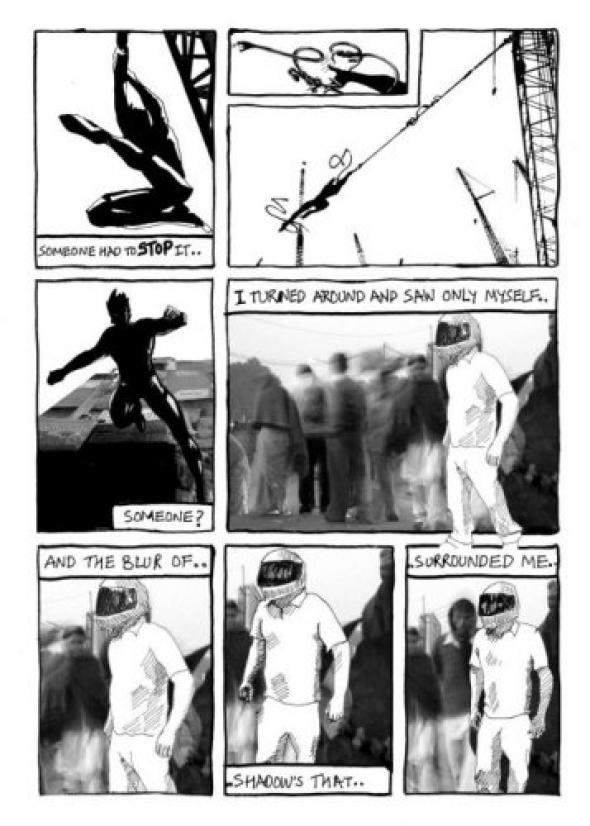Orientalism Inverted: The Rise of 'Hindu Nation'
Is Indianness just a German ideology? In the first of a two-part analysis of neoliberalism in the subcontinent, Neil Gray traces the history of Hindu cultural nationalism, from a colonialist mystique of pure spirituality to today's fascist pogroms and economic polarisation
The abject poverty and extreme economic polarisation created by neoliberal regimes requires national ideology to legitimate and obfuscate its violence. Cultural nationalism gives coherence to the activities of the nation state and capital, and best serves the conflicting requirements of accumulation and legitimation for neoliberal elites. Thus Radhika Desai contends:
... the deployment of the language of particularity, of cultural difference and nationalism, in counterfeit answer to the accelerating universalism of capitalism, which it supports and promotes, is the ingenious reality of the right today.1
In India, the chief cultural nationalist movement is Hindutva, a communalist Hindu nationalist ideology seeking to conflate the very idea of ‘Indianness' with ‘Hinduness'. The core practitioners of Hindutva are organised under the umbrella of the Sangh Parivar organisation, which is avowedly inspired and influenced by the Rashtriya Swayamsevak Sangh (RSS) a ‘social and cultural organisation' with a known fascist pedigree and a Hindu majoritarian political agenda. The importance of this movement, a deeply conservative multi-headed Hydra, can be measured by the presence within its ranks of the former ruling party of India, now the main party of opposition, the Bharitiya Janata Party (BJP). The Vishwa Hindu Parishad (VHP) and the boot boys of the Bajrang Dal, ‘... the violently energetic youth wing of the VHP'2 complete the Sangh Parivar ‘Trident', which fronts a host of other organisations with Hindu nationalist sympathies.
The roots of Hindu cultural nationalism lie, at least in part, in an inversion of romanticist orientalist epistemologies of the 19th century. This inversion effectively shifted social and political issues from the material to the spiritual plane – serving the needs of both the colonial masters and the privileged elites of Brahminical Hinduism. Sangh Parivar and Hindutva forces exploit this highly constructed mystical carapace as a counterfeit response to contemporary expropriations under neoliberalism. In this they are facilitated by Western orientalist perceptions of India as an ‘essentially' religious civilisation. Augmented by neoconservative theorists like the execrable Samuel Huntington, contemporary Hindu nationalism acts as a neoliberal alibi, masking the extreme authoritarianism and primitive accumulation strategies of international and local capitalist elites in a supposedly ‘Shining India'.
From Orientalism to Hindu Nationalism
That is the thing about secrets, and that is why we are so eager to know them. They give us, once revealed, a false impression of wider knowledge.
– Sukheta Mehta, Maximum City3
Orientalism, as defined by the chief theorist of the term, Edward Said, can be critically discussed as
... the corporate institution for dealing with the Orient – dealing with it by making statements about it, authorising views of it, describing it, by teaching it, settling it, ruling over it.4
In short, orientalism can be seen as an enormously systematic and diffuse discipline for dominating, managing and producing the Orient. Thomas Blom Hansen, following Said's epistemology, has observed that notions of Hinduism as a unified religion, the concept of ‘Hindu' as a well bounded cultural category, and Hindu culture as a distinct cultural zone, are largely products of
... interventions by orientalist scholars, missionaries, and colonial administrators in the Indian subcontinent since the seventeenth century.5
In line with dominant Western epistemologies of the time, early scholars and missionaries attempted to abstract an intelligible core of central tenets and ‘scriptures' from their encounter with the vast corpus of religious images, myths and practices in the subcontinent. The resultant ‘identification and construction' of classical Hinduism, now conceived as a unified religious civilisation, was borne from the supposition of a common Aryan or Brahminical higher caste culture, said to be knit together by a common language – Sanskrit. This common culture was allegedly bound by a body of ancient texts, and sanctified by a sacred geography inscribed by centres of pilgrimage all over the subcontinent. This conception of orthodox or ‘classical' Hinduism, however, was in reality codified and constructed from a myriad of diverse and heterogeneous relations of ritual and social religious hierarchies by orientalists such as Max Muller. Indeed, Muller's translation of the Rig Veda was seen by the British colonial elites – who commissioned the work – as
the oldest and thus the most authentic self-born and founding text in the larger body of Hindu philosophy.6
This translation, included in his 50-volume compendium The Sacred Books of the East, became hugely influential in disseminating the ‘Idea of India' as predominantly ‘religious', ‘mystical', ‘spiritual', in both Europe and India.
Hansen argues that the orientalist construction of classical Hinduism resulted in a pre-political ‘empty signifier' of national unity: a constructed, essentialised supposition of a national inner life and spirit from which claims could be made on the perennial nature of the Indian people. In the elite hands of orientalists, communitarians and cultural nationalists, this paradigm soon became ‘a truth beyond representation and falsification', and
a metaphysical construct of what should be there in order to make the other intelligible within a system of systematic differences.7
It was now possible to identify the East from the West in a single conceptual grammar of civilisational order and hierarchy. Presupposing the apolitical, spiritual character of the Indian masses gave narcissistic license for the colonial and Brahmin elites to lead a moral revolution of the people, while separating the imagination of society, state and economy from the profanity of ordinary politics by ordinary people. The orientalist codification of upper caste Brahminical practices into the central tenets of Hinduism, or in the historian Romila Thapar's term, ‘Syndicated Hinduism', was thus central to consolidating the British Empire's hegemonic rule in India, yet it would also instigate the genesis of Hindu nationalism.
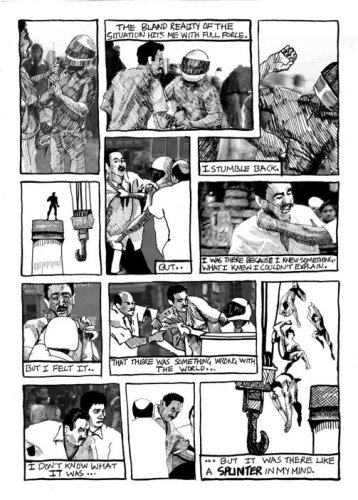
Inverting Orientalism
The colonial government's need for a pragmatic incorporation of elite segments of the Indian middle class led to an indirect, though partial, agency for client groups such as the zamindari (agricultural) landlords, literate elites, and leaders of sects, petty kingdoms, and religious communities. These groups, the indigenous ‘pillars of colonial rule', were granted some license in cultural matters, if not matters of governance. While property, security and taxation were a preserve zealously protected by the Raj, issues supposedly pertaining to the Orient - religion, community and family - were often governed by sanctioned local bodies. Upper caste groups were consequently encouraged by the British to ‘know themselves' through the gaze of the other under a high caste religious designation which may not have been so ‘rigorously described' previously.8 According to Hansen, many of these constituencies interiorised the oriental construction of East and West as essentially different, but rather than retain the negative connotations of difference inevitably produced by the colonial regime, they inverted the terms
and reversed the valuation so that the differentiation became a source of cultural and moral superiority.9
The empty signifier produced by the British helped Brahmins and other upper caste groups to codify existing social and ritual hierarchies, while consolidating their dominant social position as arbiters of truth and social sanction. The Cultural Nationalism of late 19th century India thus grew from a set of processes whereby influential Indians
began to inhabit, and make sense of, received romanticist notions of authenticity and deep cultural differences between East and West.10
Thus Swami Dayananda of the late 19th century socio-religious Arya Samaj organisation could concoct an influential mythic ‘Vedic Golden Age': an empty signifier par excellence, and a myth of which so little was known ‘that all fictions could be accepted as valid'.11 Meanwhile, R.S. Golwalker, the fascist head of the RSS organisation for over 30 years, drew upon the ‘founding myth' of the Golden age, to make the erroneous claim that India was first and foremost a Hindu Nation:
here was already a full-fledged ancient nation of the Hindus, and the various communities which were living in the country were either here as guests, the Jews and Parsis, or as invaders, the Muslims and Christians.12
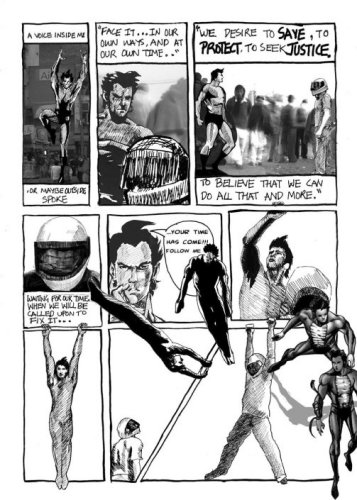
Made in Germany
It is in the Orient that we must search for the highest Romanticism.
– Friedrich Schlegel, 1800.13
By 1830 Germany had achieved ‘intellectual authority' in terms of specialised European scholarship of the Orient, and it was the Germans who were to refine and elaborate the discrete and specialised techniques of reading and analysing texts, myths, ideas and languages ‘literally gathered from the Orient' by the imperial institutions of Britain and France.14 Among parts of the European public, the works of the German orientalists produced distinctly idealist, romanticist readings of India. The romanticist conception of the subcontinent set India for a role as ‘spiritual heroine' in the 19th century European anti-modern critique of utilitarian rationalism and crude universalism, and India was widely constructed in the Western imagination as
a locus of pure essences, of immobility, of high spirituality, and an embodiment of an organic, unfragmented community.15
This conception of India, defined in moral opposition to the crude material rationalism of the West, became
an important repository for radical dreams of pristine existence and the whole and the healed self.16
For Said, citing V.G. Kiernan, this was ‘Europe's collective day-dream of the Orient', lurking in such places as ‘... the "Oriental" tale, the mythology of the mysterious East, notions of Asian inscrutability ...'.17
In a typically orientalist formulation of the time, Friedrich Schlegel, the German idealist philosopher and linguist, could happily exclaim that ‘spiritual holism' was the defining feature of Indian culture. The romanticist attraction to spiritual holism, shared by many 19th century German thinkers, mirrored the apolitical stance of India's ‘virtuous men from the upper castes'. Spiritual holism collapsed the spiritual and material world into oneness, while at the same time eradicating the separation of the objective world and individual consciousness through incorporation into ‘an all-pervasive spirit'. Syndicated Hinduism, in this paradigm, was confused with India per se, and the complicated heterodox traditions and cultures of India were simply conflated with the communitarian ideal of a unified whole: ‘India was Hindu' and ‘classical Hinduism' was constructed as the ‘... epitome of holistic spiritualism'.18
According to Amartya Sen, the tendency towards ‘heroic generalisations' was always evident in the romanticist view of India. On the one hand, Johann Gottfried von Herder could loftily proclaim that
Hindus are the gentlest branch of humanity [...] moderation and calm, a soft feeling and a silent depth of soul characterise their work and their pleasure, their morals and mythology, their arts.19
On the other hand, Schlegel attacked the European man with venom: ‘... man himself has almost become a machine [and] cannot sink any deeper'. Schlegel's hyperbole even extended to a guarantee that Persian, Greek, Roman and German languages and cultures ‘... may all be traced back to the Indian'.20 For Schlegel, the answer to the alienation and degradation of man under the machine age was not to be found in the conscious organisation of labour against capital, but in the great spiritual traditions of the Indian subcontinent. Hegel too got in on the act, making the wildly orientalist claim that India had ‘... existed for millennia in the imagination of the Europeans'.21 He understood India as essentially ‘pure spirit', though of an imaginative order (soft and feminine) rather than the ‘higher' order of the rational (masculine) spirit of the West. For Hegel, echoing the Raj's political instrumentality, this preponderance of the imaginative over the rational explained the enfeebled, fragmented socio-political culture of the Indian states.22
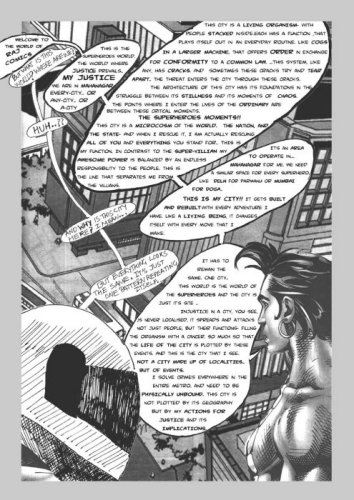
A Hindu Volk
The grandiose assertions of the German romanticists struck a receptive chord with parts of the Indian intelligentsia. Herder's romanticist nationalist philosophy of a nation beyond politics residing in the permanent ‘life force' of the people and enunciating popular truth in the face of domination appeared ‘eminently meaningful' to large parts of the Indian colonial middle class. No mere ‘German Ideology', the idea of nation as popular, cultural and latent, spread rapidly throughout India with cultural nationalism quickly developing as the inverted offspring of German orientalism. For Herder, the national soul was ‘... the mother of all cultures upon earth', representing an inexpressible spirit in the world, which resided in its ‘purest form' within the common national Volk.23 Herder's romanticist discourse of cultural difference and authenticity provided a conceptual grammar for a domesticated cultural nationalism, and became a powerful impulse for an incipient national ideology based on received orientalist categories in India.
J.G. Fichte further contributed to an essentialised and organicist conception of nation by arguing that cultures were constituted through the nature-given essence of nationality and could only survive and develop through deep emotional attachment to a state ‘... that gave body to the nation'.24 By virtue of this profound emotional attachment, a nation could become practically invincible according to Fichte - even in the face of inferiority in terms of material, military and productive power. Cultural nationalism would ultimately depend on ‘will' and the ‘idea' of nation. The will to sacrifice and loyalty could ‘elevate' patriotic men above the petty concerns of politics and historical contingency to provide the very life force of the nation - an idea all too amenable to Indians pinioned by the brute force of colonial domination. The cultural nationalism of Herder and Fichte, and their romanticist emphasis on discourses of ‘... fullness, spirituality, depth, sensitivity and authenticity', helped ensure that later attempts to construct and consolidate a ‘Hindu community' by leading Hindu nationalists would remain captive to the orientalist imagination.25
The basis of Vivekananda's ‘complete man' was an eternal Herderian national spirit. Like the ideal national citizen of Fichte, he would be educated in ‘the great truths of the Vedanta' - culturally awakened and a fervent carrier of the national will.26 Bal Gangadhar Tilak likewise glorified the deeds of the Vedic age, and in his writings rejected the right of foreigners to criticise or judge Hindu civilisation. Echoing orientalist scholars he claimed the Vedic civilisation was the oldest, the most refined, and the mother of all civilisations in the world. For Tilak, its resilience was proof of its viability. Golwalker, meanwhile, mobilised a series of empty signifiers, in classical orientalist mode, to portray Hindu civilisation as the ‘first thought givers to the world', Indian spirituality as essentially ‘inexpressible', and Hindu-ness as ‘too fine to be defined'.27 Despite the vagueness of Golwalker's definition of ‘Hindu-ness', he argued that those who failed to satisfy its criteria, should ‘fall out of the pale of real "National" life'.28
Communalism – from Above
One must never forget that communalism in India is a latter-day phenomenon which has grown up before our eyes.
– Jawaharlal Nehru, 193629
The institutions of orientalism emerged alongside the vast expansion of colonial domination around the globe. Above all, communalism developed as ‘a weapon of economically and politically reactionary social classes and political forces'. Communalism was an intentional construction on the part of the British colonial elite, and was consciously developed and supported by vested interests for its ‘... capacity to distort and divert popular struggles'.30 British divide and rule policy exacerbated and inflamed communal tensions, exploiting existing social differences to divert efforts to create a nationally unified opposition to British colonial rule. Communalism was only one part of this divisive strategy, which set
region against region, province against province, caste against caste, language against language, reformers against the orthodox, the moderate against the militant, leftist against the rightist [...] and class against class.31
The Morley-Minto reforms of 1909, codified and consolidated communalism in India. The reforms established separate, though limited, electorates for Muslim voters. Muslim voters were put into separate constituencies for which only Muslims could stand as candidates, and for which only Muslims could vote. Since voters belonged exclusively to one religion, candidates had no need of appealing to voters of other religious designations. They were thus encouraged to elicit the support of Muslim voters on communal lines. The Montague-Chelmsford reforms of 1919 deepened religious sectarianism by establishing separate Hindu and Muslim mass constituencies. Voters in this system, according to Bipan Chandra, were ‘... gradually trained to think and vote communally [...] and to express their socio-economic grievances in communal terms'.32 The colonial propensity for classification intensified these divisions, and the operations of the census from the 1870s onwards further cemented mutually exclusive definitions of ethnic and religious types for the purposes of enumeration and control.33
Cementing these divisive procedures, the Raj treated Hindu, Muslim and Sikh communities as separate, with little in common. Official favour was extended to communalists over nationalists; the communal press was endowed with extraordinary freedom in comparison to the nationalist press; and communal leaders were readily accepted as spokespersons for their ‘communities'. Nationalist spokespersons, by comparison, were treated as representing only a small minority. These strategies combined to engender client groups - position-seeking middle classes - who were dependent on the colonial elite, at the same time as they created religious and ethnic voting blocks which were previously non-existent.34 Mushiral Hasan argues, for instance, that the ideological contours of a separate Pakistan were birthed from the ‘blurred images' of British ethnic and religious categorisation, as middle class sections of the Muslim community embraced an institutionalised and homogenised conception of religious identity, and began to see themselves: ‘... in the colonial image of being unified, cohesive and segregated from the Hindus'.35 Mohammed Al Jinnah's transition from a Congress nationalist ‘Ambassador of Hindu-Muslim Unity' in 1906, to his position as the ‘leader of Muslim communalism' by the late '20s, and his final arrival as the founder and leader of a separate Pakistan, perfectly illustrates this logic of political communalism.36
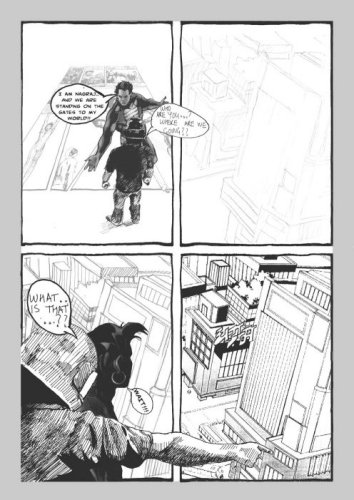
From Mother Cow to Ram
The empirical knowledge practices of the colonial state were partly internalised by cultural reform movements who strove to organise and systematise a new and abstract cultural community of Hindus ‘... within a generalised, supra-local, nationalist discourse and imagination'.37 Sandria B. Frietag argues that communalist groups emerged in the nexus of relations between the ‘public' domains that the imperial nation state claimed for itself and the competing forms of ‘private' identity formation that communalist groups staged in the public sphere. As the colonial state increasingly negotiated with Indians on the basis of their religious group identity, it was clear that the rewards went to those ‘... who invoked only certain kinds of identities'.38 Drawing sustenance from constructed ‘identity slots' and ‘... authorised by the colonial state', communal groups began to experiment and contest their status more systematically in the public sphere.39 Frietag argues that the cow protection movement of 1880 – 1920 shows how early public expressions of shared religious precepts ‘... evolved into larger ideological statements about imagined communities'.40
The very ambiguity of meaning in heterogenous, localised worship of ‘Mother Cow' allowed activists to link local identities and values to a broader ideological movement. The figure of the sacred cow could ‘... unite popular and high culture; it could serve reformist and traditional ends; it could reach the heart of townsmen and peasants alike'.41 Utilising the ‘dense metaphor' of the Mother Cow, the movement performed the double function of obscuring intra-caste tensions between Hindu groups contesting ownership of rural land, while underscoring sectarian schisms by setting up various groups outside the shared cultural system - Muslim and Christian beef eaters for instance - as demonised and targeted others. For Frietag, the communalised discursive space that emerged from these constructions of group identity can be traced, from the cow protection movement through to contemporary manifestations, by certain shared characteristics - the evocation of an imagined community; communal group identity before the state; ‘dramatic moments', including riots; specialised religious vocabulary; public assertion utilising modern mass means of communication; street mobilisation; violence; and the creation of an identifiable ‘other', most notably Muslims. As we shall see, all these characteristics, aligned to the mobilisation of the symbol of Ram, were very much in evidence during the infamous events at Ayodhya.
Ram – ‘Prophet' of Hindutva
The colonial assertion of a unified religious basis to Indian civilisation was revived in its inverted perspective during the 1980s through the Sangh Parivar's attempts to turn the worship of Ram, the hero of the oral epic The Ramayana, into the paramount God in the Hindu pantheon. Romila Thapar's essay ‘A Historical Perspective on the Story of Ram' observes that in Valmiki's ‘original' version, and in all the early Bardic tellings, Ram is depicted, not as a god in a religious text, but as a ‘human hero' in an oral tale with many local variations. Disregarding this ‘all too human' history, RSS ideologists now argue that The Ramayana is ‘a document of supernatural veracity'42 and have sought to deploy Ram as ‘a metaphor for the catholicity of traditional Hindu forms of devotion and piety'.43 Ram has now been constructed as a central figure in the VHP's strategy ‘to derive, reconstruct and superimpose' an integrated symbolic centre on the large and diverse field of Hindu social practices. The town of Ayodhya in the north of India became the crucible for these strategies, supplying ‘materiality and concreteness to the spatial imagination of a Hindu Rashtra [Hindu Nation]'44.
A temple marking the site of the birthplace of Ram allegedly stood in Ayodhya until its supposed demolition in 1528 by Babur (the founder of the Mughal dynasty). The Babri Masjid mosque, it was argued, was built on the exact site of this purported desecration. For the Hindu Nationalist movement, the site has long held enormous symbolic promise. Plans to mobilise and destroy the mosque have consistently agitated and channeled
the anti-Muslim sentiment of Hindus towards the mosque as a symbol of their ‘humiliating domination' while simultaneously exploiting their feelings of devotion for Ram.45
The VHP's decision to reanimate the issue in 1984 was taken despite the fact that there is
no archaeological evidence to support the idea that a temple ever existed on the site, or that this is the birthplace of Ram, or that the present-day Ayodhya is the site of the capital city of the same name where Rama was born in the Ramayana. It is entirely a question of belief [my italics].46
Nevertheless, the Ayodhya issue and the adept manipulation of the symbol of Ram helped transform the BJP from a peripheral party of the right into the Congress Party's primary national opposition.
Ram Versus Barbur – Holy War
In 1990, L.K. Advani, then leader of the BJP, embarked on a national ‘Rath Yatra' (chariot procession) designed to awaken in the Hindu population the desire to ‘reconstruct' a Hindu temple in honour of Ram on the site of the Babri Masjid. Advani's aim was ‘... to infuse a sense of shame and humiliation among the people for Hindu society's alleged failure to protect its shrines from desecration by Muslim conquerors'.47 Ram was openly depicted as an agitational device to embody a virile response to this perceived shame. The Yatra, ‘Advani's road show', covered 300 km a day, addressing an average of six meetings daily through eight states in the Hindi heartland. In total, Advani travelled 10 thousand km in a vehicle ‘... designed to represent an epic chariot and decorated with the electoral symbol of the BJP (a lotus) and the Hindu OM'.48 Geographical mobility, military display, and provocation all featured heavily. VHP and Bajrang Dal activists lined the way with bows, arrows and trishuls. Advani openly described the mobilisation as ‘... a controversy between Ram and Babur'49 while the RSS publicly declared the Rath Yatra ‘A Holy War'.50
The Chariot procession motif evoked a religious devotionalism to what was essentially a political agenda. For the first time a mainstream parliamentary leader unapologetically utilised propaganda ‘... of an overtly Hindu nationalist character' for political ends.51 Advani and the BJP projected Ram as a metaphor for ‘... the essential Hinduness of Indian culture' and the Ram-janmabhoomi agitation was staged as a modern manifestation of ‘... an ancient, irresistible stream, a corporate Hindu culture'.52 Conversely, the Babri Masjid was depicted as ‘radical negativity' in Hindutva discourses: the embodiment of the ‘... traumatic historical kernel of Hindu disunity and effeminacy that had to be removed to produce a Hindu Volk'.53 To this end – against the grain of historic depictions – Ram was reimagined and restaged as a warrior, a bare-chested ‘Rambo' with bow and arrows, resplendent in heroic and manly postures. The result of the mobilisation was predictable. The Yatra generated severe communal tensions along its route, ‘... leaving hundreds of minor and major incidents of anti-Muslim pogroms in its trail'.54
In Ayodhya town, on the morning of 6 December 1992, 150 to 200,000 RSS volunteers ‘breached' a line of security at the Babri Masjid and began stoning the Mosque and the police guarding it. They used ropes to clamber onto the domes and set about wrecking them with picks and iron rods. The authorities (state and national) abdicated all responsibility to protect the mosque. The media present were attacked and had their equipment smashed. Within two hours in the afternoon all three domes were demolished. Meanwhile, Muslims were attacked in Ayodhya town, and their homes set ablaze. In the week that followed, communal riots officially claimed 1,200 predominantly Muslim lives nationwide. In Bhopal alone, where the riots blazed uninterrupted for a week, 16,895 people were forced to find shelter in 31 refugee camps, while at least seven states were torn by communal riots and badly hit with fatalities.55
In the face of evidence from the Archeological Survey of India (ASI), which disputed claims that Ayodhya was the birthplace of Ram, the Sangh Parivar claimed that Hindu matters of faith were outside the rational discourse and ‘foreign methods' of scientific investigation. Advani, for instance, asserted: ‘No judge can give a verdict on the birthplace of Lord Rama, which is a matter of faith for Hindus'.56 Meanwhile, Advani was lionised on the BJP website for his role in mobilising Ram during the fiercely communalised events: ‘... Shri Advani emphasised the cultural unity of the country by highlighting Shri Rama as a symbol of cultural renaissance and as a national symbol'.57
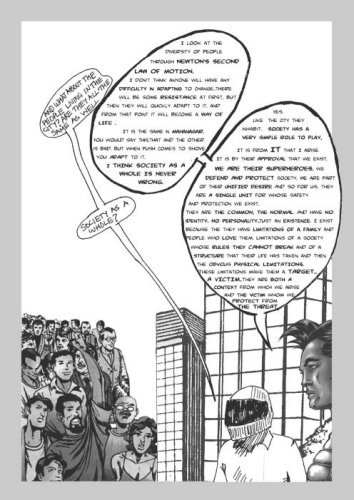
The Ram Sethu Project
The Ram Sethu issue of late 2007 showed that Ram could still be mobilised as a potent force by the Sangh Parivar. The BJP, and groups associated with the VHP, argued that the Sethusamudrum Ship Channel Project (SSCP) - a project to dredge a 167-kilometre passage for container ships between India and Sri Lanka - should not proceed. They argued that any structural change to a group of islands known as ‘Ram Sethu' would hurt the religious sentiments of Hindus. In Hindu mythology, Ram is said to have built the Ram Sethu ‘bridge' as a chain of islands in order to reach Lanka and rescue his abducted wife Sita. The BJP and the Sangh Parivar argue that belief should be respected in relation to the Ram Sethu project and other large development projects. Further, they argue that ‘The Ramayana' constitutes ‘historical evidence' of Ram's existence and his construction of the bridge. The Archeological Survey of India's (ASI) affidavit, however, found that the islands were ‘natural forms' and that mythological texts could not prove the existence of the characters: ‘... or the occurrence of the events depicted therein'.58
A storm of Hindutva protests over the ASI's alleged affront to Hindu sensibilities caused the Congress-led UPA to withdraw the ASI affidavit, and to redraw the line of the shipping channel for fear of a ‘Hindu backlash'. Parful Bidwai argues that the VHP and the RSS now hold ‘an effective veto' over the UPA, evidenced most clearly at the political level by the BJP, ‘their parliamentary face, alter ego, and ventriloquist'.59 For the BJP, the ASI's denial of Ram's existence as historical fact constitutes a blasphemous insult to Hindus. L.K. Advani claimed that the ‘pseudo-secular' forces of government ‘sought to negate all that Hindus consider sacred ... and wounded the very idea of India'.60 The VHP, for their part, warned the UPA government that ‘Hindu rage would be unleashed globally against it if it proceeded with the Sethusamudrum project'.61 The mobilisation of Ram around the Ram Sethu issue was clearly a politically instrumental strategy designed for electoral gain: the Ram Sethu project was first sanctioned by the BJP back in 1998, when the BJP were in power under the leadership of Vajpayee. The turnaround in opinion was designed to agitate ‘Hindu consciousness' nationwide for the communally loaded Gujarat elections in the west of India.62 The withdrawal of the affidavit shows how far the Sangh have come in introducing an irrational religious content, backed with the threat of communalised violence, into national debate, and vividly underscores the surrender of Congress to communal forces. What that has meant in practice was ferociously underlined in the Gujarat massacre of 2002.
‘Snakes Hissing' – a Hindu Jihad
We made the whole plan ... to start A Hindu Jehad ... we were successful in Gujarat...
– Dhimant Bhatt, BJP63
The horrific pogrom of over 2 thousand Muslims by Sangh Parivar activists in Gujarat in December 2002 showed that what could not be recuperated through ideological persuasion could just as well be controlled through the judicious use of ‘the hard edges of police lathis [truncheons]' and the ‘dull compulsions of economic relations'.64 A Human Rights Watch report indicted the Sangh Parivar and the ruling state party, the BJP, for their complicity and culpability in the massacre:
The groups most directly responsible for violence against Muslims in Gujarat include the Vishwa Hindu Parishad [VHP], the Bajrang Dal, the ruling BJP, and the umbrella organisation, the Rashtriya Swayamsevak Sangh (the RSS).65
The report went on to describe Sangh Parivar cadres, as ‘... militant groups that operate with impunity, and under the patronage of the state'.66 Desai argues that Hindutva performed a ‘major service' to the Gujarati propertied classes by increasing violent competition with the Muslim bourgeoisie of the state. Sectarian ruptures in the new ‘religious borders' have now reconfigured Gujarat's urban geography through riots, ‘... with blatant connections to real estate transactions'. Muslims, who no longer felt safe after the riots, left behind property and position ‘... to be grabbed by those who feel secure in current conditions'.67 Despite new evidence of government complicity in the riots - reported in the celebrated Tehelka magazine ‘sting' – the Gujarat electorate rewarded the BJP by reinstalling the government, and the notorious Narendra Modi as Chief Minister, for their third term in December 2007.68 Meanwhile, Professor Shastri of the VHP was philosophical about the murderous activity of his ‘boys' in the riots:
We needed to do something. It is said that snakes that are not poisonous should keep the enemy away by hissing once in a while.69
The willingness of the Gujarat electorate – one of the wealthiest states in India – to continually re-elect Modi and his BJP government, indicates that the policies and strategies adopted by Hindutva have a wide appeal for the electorally important middle classes. The stabilisation of the Hindutva vote among India's richest, most educated and socially elevated sections has now become fully clear. Hindutva has now proven it features all that this powerful class could wish for:
Neoliberal economic policies, Hindu cultural assertion, [and] the full range of stances towards Muslims and others with the capacity to disturb their comfortable position by demanding their rights.70
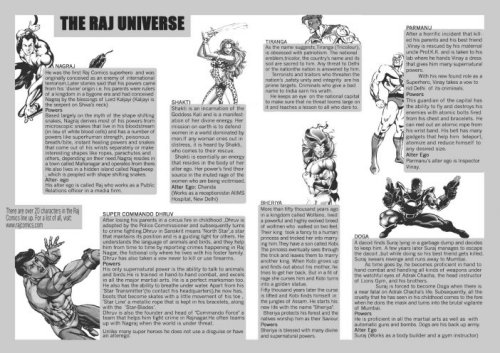
Neoliberal Neo-Gandhianism
Their innermost secret, namely, that ‘there is no secret', only profanity, must, hence, be carefully guarded. It is, after all, precisely this ritualised guarding, this objectification of belief, that generates the illusion that there is a secret in the first place.
– Thomas Blum Hansen, 199971
The brutality of the Sangh Parivar is not in itself capable of creating a hegemonic right in India. For Radhika Desai, neo-Gandhianism is the specific contemporary form of cultural nationalism for the conservative bourgeois Indian intellectual, and is thus central to the restructuring and reproduction of a rightist hegemony in the Asian subcontinent. Neo-Gandhian discourses emerged within the ‘intellectual reconstitution' of the global new right in the 1980s and 1990s, which typically conceived of culture as disembodied ‘... rather than incarnated in society's material - productive and reproductive - processes'.72 For Desai, neo-Gandhianism, exemplified by Ashis Nandy's writings, borrows from the same irrationalised sources as the Sangh Parivar groups to implicitly, if not always consciously, support Hindutva's quest for hegemony. Desai argues that Gandhi's ‘brand equity' provides neo-Gandhians with a claim to tradition and authenticity which allows its followers to do political trade on Gandhi's ‘breathtakingly' uncritical international prestige. Moreover, they exploit orientalist ideas about India to deploy mystery and ineffability ‘as a product differentiating (secret) patent' in order to assert themselves internationally: ‘... without having to prove themselves in genuine intellectual engagement'.73
Nandy's intellectual coordinates reflect the discourses of neo-conservatism and gain legitimation through bourgeois strains of postmodernism, which carelessly collapse all forms of instrumental and dominating reason into reason itself. Critical traditionalism implicitly conceals caste and class difference, displaces the category of inequality, and reinforces the present hierarchical system ‘... through a silent abandonment of the analysis of capitalism as a global economic system'.74 Critical traditionalism therefore functions as a vital alibi for neoliberalism in India. Nandy has argued that he wants to ‘... justify and defend the innocence [of the ‘non-modern' or ‘traditional' colonised cultures] which confronted modern colonialism'.75 Further, he takes it upon himself to ‘speak out' for the ‘humble citizen' pitting his body ‘... against the might of the high technology of his oppression'.76 By doing so, Nandy reifies Gandhi's conservative discourse of the masses as an empty signifier of political innocence and religious purity - a prime orientalist fantasy of the middle classes.
Regardless of Gandhi's undoubted ability to mobilise the masses against the British, his ‘less than emancipatory' role in rural India was pivotal in securing the support of the agrarian propertied classes for the 1920s Congress nationalist campaigns.77 The Congress left (never hegemonic within the party) was dependent on alliances with rural landlords and rich farmers to deliver the vote banks of the rural poor. They were left ‘hostage to Gandhianism' when these landed elites were paid back in kind for their economic and political support. The post-independence constituent assembly secured the economic interests of the rural rich, ‘... by removing land reform and agricultural taxation from the control of central government'.78 This decision acted to economically ‘constrain the imagination' of the party's progressive left, and bound the Congress, ‘... to alliances and commitments that came to dominate India's politics until at least the 1960s'.79 The advance of Hindutva from the '70s onwards was due, in part, to the collapse of this always suspect ‘patriarchal-patrimonial' alliance between Congress and the rural elites. Furthermore, Gandhi's legitimation of property through his conception of trusteeship, which in Gandhi's words had ‘... the sanction of philosophy and religion behind it' further catered to the rural dominant classes, as it was finally dependent on religious appeals to morality and the principle of voluntary abnegation of wealth.80 Gandhi's services to the landed elites can thus be seen as part of his ‘... flexible ideology with a record of service to property [my italics]'.81
Nevertheless, Gandhi's ‘brand equity' helps Hindutva deploy the fantasy of the ‘traditional' Indian peasant village: one without exploited or exploiters; and one where the various class and caste segments are united under the ‘chief myth' of the nation as a romanticised and harmonious organic whole. Yet, Nandy's telluric peasant worker, bound harmoniously to the native soil, is more than ever a figment of the orientalist imagination. Hardt and Negri, amongst others, have challenged the romanticisation of the ‘traditional' rural worker. For them, we are already in the ‘twilight world of the peasant'.82 Under the globally pervasive ideology of neoliberalism, smallholding subsistence agriculture, the ‘natural' terrain of the rural peasant worker, has been almost completely eradicated in the race to achieve economies of scale for export-orientated single crop agriculture. This goal has led to increasing industrialisation, and the consolidation of ownership within agriculture at the expense of peasant smallholders. Thus the picture in Indian agriculture as a whole is ‘dominated by a single distinctive phenomena' [sic]; that of the transition in Indian agriculture to increasingly advanced forms of capitalist relations of production,
with all that it usually means in terms of concentration of productive assets, increasing poverty, and the cultural transformation of production and consumption.83
Authoritarian Hindu nationalism, supplemented by pervasive neo-Gandhianism, helps to legitimise the accumulation strategies of neoliberal elites. Resuscitating inverted forms of orientalist ideology as a ‘counterfeit answer' to the real class and caste content of punitive social and economic regimes, these appear somehow independent from material reality. However, the repetition of 19th century idealism has met with resistance. The next part of this article deals with what Utsa Patnaik termed the ‘dangerous classes', those counter forces who ground their theory in the material conditions of production in an attempt to challenge from below what Marx called the ‘hegemony of spirit in history'. These recalcitrant forces form the most potent internal threat to the regressive discourses and ideologies of Hindutva.
Info:
The second part of this article, ‘Orientalism Inverted: Resistance in Hindu Nation', can be found at: http://www.metamute.org/editorial/articles/orienta...
Footnotes
1 Radhika Desai, Slouching Towards Ayodhya, Three Essays Press, 2002, p.62.
2 Amartya Sen, The Argumentative Indian: Writings on Indian Culture, History and Identity, London: Penguin Books, 2005, p.52.
3 Sukheta Mehta, Maximum City: Bombay Lost and Found, London: Penguin books, 2005, p.351.
4 Edward W. Said, Orientalism: Western Conceptions of the Orient, London: Penguin Books, 1995, p.3.
5 Thomas Blum Hansen, The Saffron Wave: Democracy and Hindu Nationalism in Modern India, Oxford: India Paperbacks, 2001.
6 Ibid., p.68.
7 Ibid., p.66.
8 Ibid., p.66.
9 Ibid., p.60.
10 Ibid., p.42.
11 Christophe Jaffrelot, The Hindu Nationalist Movement and Indian Politics, London: Penguin Books, p.77.
12 A.G. Noorani, The RSS and the BJP: A Division of Labour, Leftword, 2000, p.22.
13 Edward W. Said, op.cit., p.98.
14 Ibid., p.19.
15 Thomas Blum Hansen, op.cit., p.68.
16 Ibid.
17 Edward W. Said, op.cit., p.52.
18 Thomas Blum Hansen, op.cit., p.67.
19 Amartya Sen, The Argumentative Indian: Writings on Indian Culture, History and Identity, London: Penguin Books, 2005, p.152.
20 Ibid., p.152.
21 Ibid., p.141.
22 Thomas Blum Hansen, op.cit., p.68.
23 Ibid., 41.
24 Ibid., p.41.
25 Ibid., p.42.
26 Ibid., p.70.
27 Ibid., p.81.
28 A.G. Noorani, op.cit., p.20.
29 Bipan Chandra et al, India's Struggle for Independence, London: Penguin Books, 1999, p.401.
30 Ibid., p.407.
31 Ibid., p.408.
32 Ibid., p.419.
33 David Ludden, ed., Contesting The Nation: Religion, Community, and the Politics of Democracy in India, University of Pennsylvania Press, 1996, p.279.
34 Bipan Chandra et al, op.cit., p.409.
35 David Ludden, ed., op.cit., p.193.
36 Bipan Chandra et al, op.cit., p.433.
37 Thomas Blum Hansen, op.cit., p.68.
38 David Ludden, ed. op.cit., p.219.
39 Thomas Blum Hansen, op.cit., p.38.
40 David Ludden, ed., op.cit., p.220.
41 Ibid., p.218.
42 Amartya Sen, op.cit., p.xii.
43 Thomas Blum Hansen, op.cit., p.38.
44 Ibid., p.161.
45 Christophe Jaffrelot, op.cit.
46 Ibid.
47 K.N. Pannikar,Communal Threat Secular Challenge, Earthworm Books.
48 Christophe Jaffrelot, op.cit.
49 Ibid.
50 Ibid.
51 Ibid.
52 Thomas Blum Hansen, op.cit., p.174.
53 Ibid., p.175.
54 Ibid., p.165.
55 Ibid.
56 David Ludden, ed. op.cit., p.54.
58 Frontline, Volume 24, Number 19, 5 October, 2007, p.134, http://www.frontline.in
59 Ibid., p.133.
60 Ibid., p.133.
61 Ibid., p.13.
62 For an extensive account of Hindutva politics in Gujarat, see Neil Gray, Variant 32, Summer, 2008, www.variant.org.uk
64 Ibid., p.102.
65 http://www.hrw.org/reports/2002/india/
66 Ibid.
67 Radhika Desai, op.cit., p.158.
69 http://www.sacw.net/Gujarat2002/GujCarnage.html
70 Radhika Desai, op.cit., p.148.
71 Thomas Blum Hansen, op.cit., p.83.
72 Radhika Desai, op.cit., p.124.
73 Ibid., p.72.
74 Ibid., p.63.
75 Ibid., p.81.
76 Ibid., p.82.
77 Ibid., p.92.
78 Sunil Khilnani, The Idea of India, Penguin Books, 2003, p.75.
79 Ibid., p.74.
80 http://www.mkgandhi.org/trusteeship/trusteeship.htm
81 Radhika Desai, op.cit., p.67.
82 Michael Hardt and Antonio Negri, Multitude, Penguin Books, 2006, p.115.
83 Radhika Desai, op.cit., p.25.
Mute Books Orders
For Mute Books distribution contact Anagram Books
contact@anagrambooks.com
For online purchases visit anagrambooks.com


